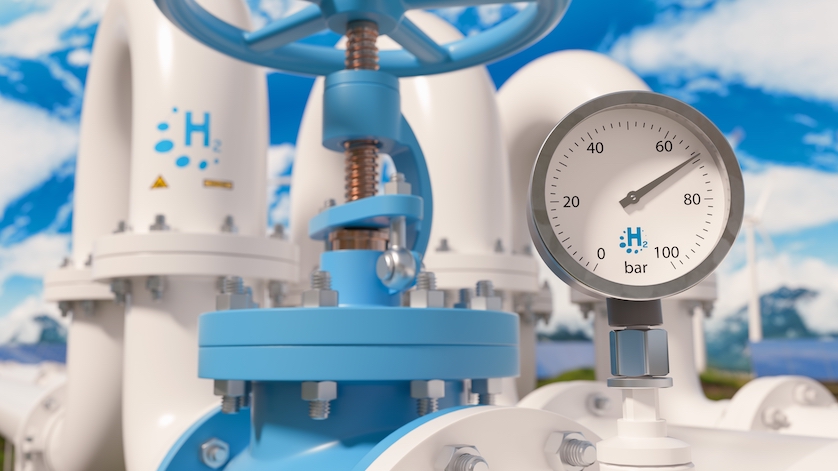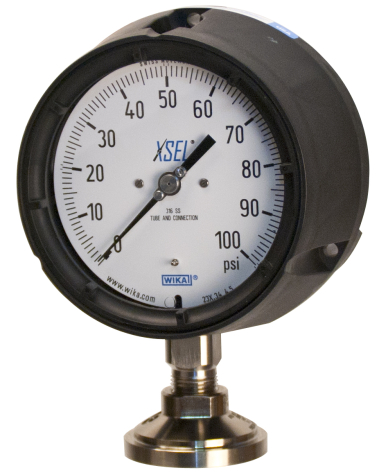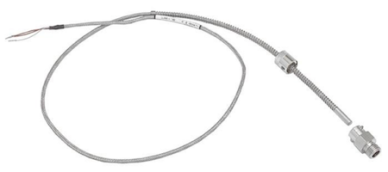
All types of hydrogen compressors, from piston-type to centrifugal (turbo) compressors, need hydrogen-compatible pressure and temperature instruments with hazardous area approvals and other safety features.
More industries and consumers are moving away from fossil fuels in order to reduce their carbon footprint. Increasingly, hydrogen is gaining traction as both a transportation fuel and a feedstock for the creation of fertilizers and important products, especially when H2 is produced with renewable energy (green hydrogen).
As the lightest known element, hydrogen takes up an inordinate amount of space at ambient pressure and temperature. Thus, H2 needs to be greatly compressed – in some cases up to 14,500 psi (1,000 bar) – to reduce its volume for efficient storage, transport, and usage in hydrogen fueling stations, chemical plants, and other applications. Needless to say, hydrogen compressors are an essential part of the H2 value chain and the effort to decarbonize global economies.
Types of Hydrogen Compressors
There are several types of gas compressors. Each design has benefits and drawbacks, and the choice of which one to use depends on the particular gas, the available installation space, the desired compression ratio and throughput, etc.
The types of units most commonly used to compress hydrogen include:
- Piston compressor – This is a type of reciprocating/linear compressor that uses a back-and-forth motion to push the hydraulic rod and piston in order to reduce the volume that the gas occupies. Advantages of a piston compressor include a relatively compact footprint and high compression ratio.
- Diaphragm compressor – This is another type of reciprocating/linear compressor. But rather than having the piston itself displace the gas, the rod pushes against a flexible disk. This membrane effectively separates the mechanism’s hydraulic oil from the compressed gas. For extra safety and purity, a diaphragm-type hydrogen compressor typically uses metal diaphragms in three places: oil side, intermediate, and gas side.
- Ionic compressor – This type of reciprocating/linear compressor uses a column of ionic fluid rather than a mechanical system to move the piston. Since there are no crankshafts, hydraulic rods, bearings, or seals, ionic compressors experience fewer failures than most other types of hydrogen compressors. The ionic fluid also protects metal parts from hydrogen permeation and embrittlement.
- Centrifugal compressor – This turbine-based compressor reduces a gas‘s volume using an impeller rotating at very fast speeds. Also called a turbo compressor, the advantage is a high throughput using a single stage, provided that the rotational speed is fast enough and the impeller is large enough. One possible downside is its large footprint.
Compressors are driven by either a hydraulic power unit or an electric motor, and it can take two or more stages to sufficiently reduce the volume of hydrogen gas for storage and transport. The initial inlet pressure is 20 to 200 bar, and the eventual outlet pressure is 700 bar or more.
Hydrogen compression technology is not limited to mechanical compressors. There is also cryogenic liquefaction: cooling hydrogen below its boiling point of −423°F (−253°C, 20.28 K). Experimental methods include solid-state storage and liquid organic hydrogen carriers (LOHCs).
Hydrogen Compression: A Hot Topic
As the least dense molecule, a tremendous amount of energy is needed to compress hydrogen to the high pressures required. This process greatly increases the gas’s temperature, and significant heat is generated. That’s why mechanical hydrogen compression systems are equipped with refrigeration systems, with highly pressurized hydrogen passing through a heat exchanger to cool it to about −40°F (−40°C), making the gas safer to work with and store.
For the hydrogen compression systems with crankshafts, connecting rods, and other mechanical parts, the compressor bearing also heats up, and its temperature needs to be monitored. If a hydraulic power unit drives the mechanics, industrial sensors are needed to monitor and control the unit’s pressure, temperature, and fluid levels.
Measuring Instruments for Hydrogen Compressors
An array of process-grade pressure gauges, pressure transmitters, and temperature sensors keeps hydrogen compressors operating safely and efficiently. WIKA has a comprehensive portfolio of high-quality measurement solutions, including many products with hazardous area approvals, for makers of hydrogen compression equipment.

23X.34 process gauge
Process-grade pressure gauges for hydrogen compressors
- 23X.34 XSEL® process pressure gauges
- 23X.30 process pressure gauge with safety cases
Pressure transmitters for hydrogen compressors
- N-10 hazardous area pressure transmitter with non-incendive design
- IS-3 hazardous area pressure transmitter with intrinsically safe design
- E-10 hazardous area pressure transmitter with explosion-proof design
Temperature sensors for hydrogen compressors’ heat exchangers and coolers
- TR10-B threaded resistance thermometer
- TR34 miniature resistance thermometer – threaded, explosion-protected version

TR53 bayonet RTD
- TG53 process grade bimetal thermometer
Temperature sensors for hydrogen compressor bearings
- TR53 resistance thermometer with bayonet adaptor
WIKA, a Trusted Supplier of Hydrogen Sensors
WIKA supplies high-quality pressure gauges, pressure sensors, and temperature measurement solutions for some of the world’s leading hydrogen compression manufacturers. Regardless of the compressor design, we have the instrumentation solution that you seek to keep your equipment running as safely and efficiently as possible. Contact our experts in industrial machines and hydrogen applications for personalized advice and high-quality instruments, including engineered solutions customized for your specific hydrogen compressor.

